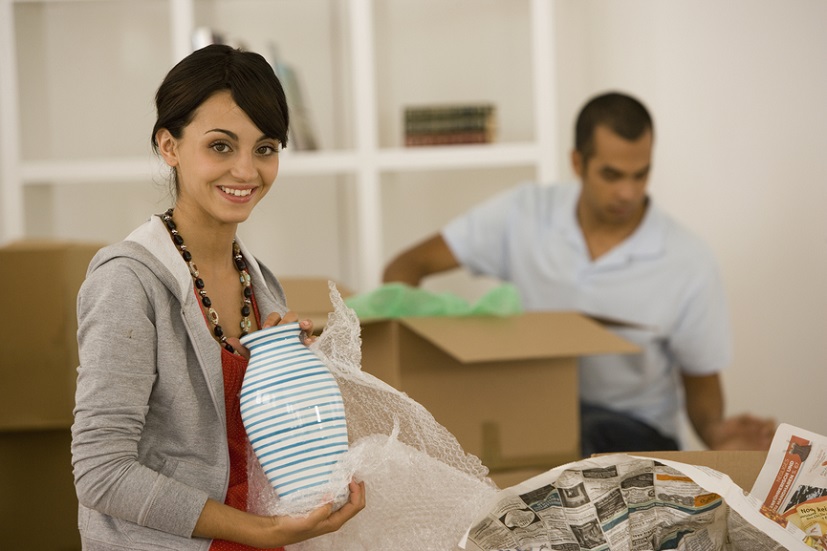
Packing your belongings by yourself is a great option for reducing moving costs. With some boxes, packing paper and a few tips, you are good to go. The guidelines below work for our company packers and our clients in the NY and greater NY area.
General rules and guidelines for how to pack alone
The first step to set the wheels in motion for a smooth and easy packing experience is to sort and organize your fragile belongings as you tackle each room. You likely have breakable items, such as vases or lamps, in addition to your kitchenware.
Set aside fragile items so they don’t get mixed in with other boxes. There are some basic rules concerning how to pack for moving. Follow these and save money on your next move.
Standard packing rules
- When self packing boxes, fill each box, but never overload
- Gaps must be filled with packing paper to prevent the box from collapsing inwards
- Newspaper is okay for wrapping items, but be careful of newsprint rubbing off onto delicate items
- Line each box with towels or packing paper when packing breakables
- Always tape the tops and bottoms securely
- Label each box with contents information
- All boxes with fragile items must be labeled “fragile”
Kitchen Packing
How to pack alone: the kitchen
The key to making this part as easy as packing your books and other non-breakable items, is to get into an assembly line rhythm, even if you are packing alone. Set all of the plates and breakables on the counter or kitchen table and grab your packing paper and boxes.
- Line each box with a towel or packing paper
- Wrap each item separately and place packing paper in between each one to avoid breakage
- When packing cups and glasses, use additional packing paper to fill each item so each cup and class has extra support. Glasses that are not filled with packing paper will likely break
- Small appliances also need lots of padding around them because of their odd shapes. Remember not to pile anything heavy on top of them. Perhaps flatware would go well in this box.
- When in doubt, add more paper.
Pots and Pans
The way to maximize space is to fill pots with clothing or other cloth items. Wrap each pot and pan separately and place some paper in between each item, but you don’t have to add as much paper as you would for fragile items.
Fragile items including lamps
Lamps
Remove lampshades and pile one on top of the other in one box. Put one sheet of packing paper between each one and do not pack additional items in the same box.
Knick-knacks
Knick-knacks are usually different sizes and shapes and require extra padding between them. Wrap each item individually to ensure maximum protection and place lots of paper between each item.
Furniture
The key to packing furniture is to protect all sides, corners and edges from being scraped or chipped during the move. You can wrap each piece in mover’s blankets and secure each item with packing tape.
Packing an essentials box
On moving day and for the first couple of days in your new home, the last thing you will feel like doing is rummaging through boxes looking for essential items. Make a list of the things that you think you will need during this time and pack them in a separate box. Here is a sample list:
- Clothing for two days
- Medication
- Cosmetics and toiletries
- Children’s items that are essential for the first couple of days
Once you have all the facts on how to pack alone, the process is quite simple if you follow our guidelines and try to stay organized.
To find the right packing boxes and other moving supplies to pack alone and save money, click here.
Einat Mazafi is the owner of NY Moving, a local and long-distance moving company based in New York. She is also a specialist in providing the best relocation solutions to clients worldwide.

